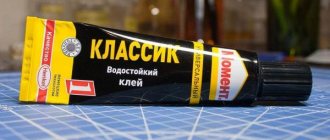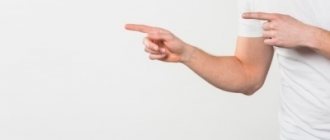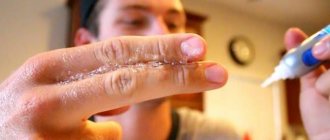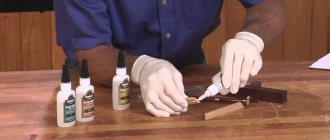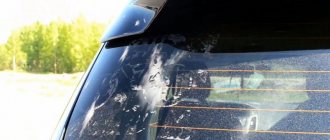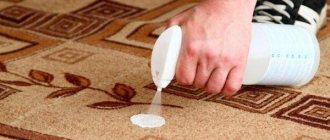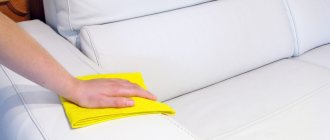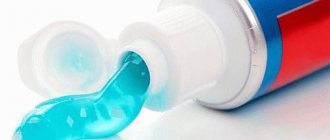Renovation work brings joy after its completion, when the room becomes more beautiful. But before you can enjoy your new surroundings, you need to do some cleaning. After all, after using different building materials, stains often remain on the surface. The use of liquid nails is popular, but even careful practice will not completely avoid marks from the solution. Therefore, you should know how to efficiently remove the consequences of repairs from different types of foundations. Details on how to wipe off liquid nails will be discussed in the article.
How to remove liquid nails at home
Liquid nails are an adhesive solution that can reliably and firmly hold different materials together. They are chosen when the use of screws and self-tapping screws is not desirable. For example, for working with plastic parts that will not withstand such installation. This is also an option to carry out repairs faster and without unnecessary noise.
The products are used for the installation of tiles, laminate, linoleum, metal products, plastic and other materials.
Due to its quick-drying properties, it is convenient to use the solution, but this can cause problems in the future. After all, it is difficult to remove a frozen layer of nails; you need to figure out how to dissolve liquid nails so as not to cause damage to the surface. On different bases, the layer will be removed in different ways.
Liquid nails are an adhesive solution that can reliably and firmly hold different materials together.
Determination of adhesive composition
Liquid mortar for bonding materials can be produced with different bases. To understand how to dilute a layer, you need to distinguish between the characteristics of the types, for example, there are types with a solvent base or with water. Compositions are selected based on operating conditions.
Liquid mortar for bonding materials can be produced with different bases.
Water based
They are distinguished by their environmentally friendly properties due to the absence of toxic substances. There will be no strong odor during operation, but the reliability and strength of the base connection is not as high as that of the next type. The drying time is slower and water evaporates. A suitable option for working with light panels and other light objects.
Not selected if it is necessary to glue large, heavy items. The solution is a little easier to clean up than the diluent-based type.
A suitable option for working with light panels and other light objects.
Solvent based
The presence of solvents in the composition makes it possible to obtain a strong adhesion that can reliably hold even heavy objects for a long time with wood, tiles, massive mirrors, etc.
However, they emit a pungent odor and the presence of toxic elements requires the use of protective equipment when working. It will be difficult to remove such a layer from a bathroom wall or other surface.
You should study the instructions from the manufacturer before purchasing the product in order to immediately understand what additional substances you should have on hand.
The presence of solvents in the composition makes it possible to obtain a strong adhesion that can reliably hold even heavy objects for a long time.
Criterias of choice
It is difficult to choose the most suitable material from a wide range. Therefore, experts advise focusing on the criteria that determine the desired type of liquid nails.
Manufacturer Quality products can be purchased from well-known manufacturers who consider the issue of reputation a priority. Among them: Moment, Kraftool, Bison, STAYER, Grover. What are the types of solvents? The product is produced: acrylic and neoprene. Acrylic is practically odorless. Suitable for fixing lightweight materials. The purpose of the product is gluing porous surfaces. The disadvantage is considered to be low resistance to adverse conditions (temperature changes, humidity, frost). Neoprene - the composition is based on synthetic rubber. The glue can even hold metal parts together. It is characterized by increased strength of connections and resistance to adverse conditions. It takes a few minutes for the materials to adhere
The downside is the pungent odor and the presence of toxic substances in the composition.
The base of the mounting adhesive is water-based; styrene butadiene; synthetic resin; synthetic rubber.
Packaging Liquid nails are packaged in two types of packaging: cartridge, tube.
Volume, l/weight, g
When calculating the amount of liquid nails, it is important to take into account the material consumption. This parameter can be displayed in liters or grams
The values are not equivalent. Product release options in volumes are 0.125-0.5 l; by weight – 125-440 g.
For external/internal work
The adhesive packaging contains information indicating the scope of application. The compositions can be intended for interior or exterior use. There are also universal liquid nails that are suitable for installation indoors and outdoors. Compositions based on synthetic rubber and resins are suitable for outdoor use. The water-soluble product is not highly resistant to atmospheric conditions.
Purpose: universal; for concrete; gypsum, drywall; wood, chipboard, MDF, PVC; mirrors, tiles; metal
Frost resistance This indicator is characteristic only of neoprene products. Universal compositions can withstand operation at temperatures from -20° to +80°. The installation indicator should be within 10°. Special adhesives can be used at temperatures from -12° to +35° with performance indicators during operation from -40° to +70°. Water resistance
The product, which contains waterproof components, is intended for use in areas with high humidity or for outdoor work. Color
Color does not determine the purpose of the product. The glue is produced transparent/translucent and in the following tones: white, beige, brown, yellow.
What tools and materials will be needed
Before you start looking for an option to wash off liquid nails from the surface, you need to read the instructions on the packaging of the product; the type of solution is important. Acrylic types are easier to clean than the neoprene version. Manufacturers usually indicate the liquid nail solvent that can be used.
Often, professionals advise immediately purchasing liquid nails and a special remover for them. But this technique involves aggressive action, so some materials may be damaged. It is necessary to conduct a reaction test in an inconspicuous area.
Most solution residues can be wiped off mechanically. You will need to prepare the following tools:
- Putty knife;
- Metal scraper;
- Sharp knife;
- Thin reliable wire;
- Fishing line.
If you decided to remove the layer using temperature, then a hair dryer is used for the hot method, and a freezer for the cold method.
Rinsing agents release toxicity, so you need to protect yourself. A respirator, protective gloves and goggles are put on, and the room is provided with high-quality ventilation.
Rinsing agents release toxicity, so you need to protect yourself.
Special cases
Sometimes a glue blot appears on the ceiling, for example, when gluing PVC panels. In this situation, it is worth spending money on a special remover, because you need to work on the ceiling carefully and for sure, otherwise the trace of the stain will immediately catch your eye. Moisten a piece of fabric with a solvent, glue it to the site of contamination, leave it for an hour, then clean it and wipe off any remaining glue.
When cleaning silicate or organic glass from liquid nails, they work extremely carefully: the slightest scratch will ruin the appearance of the product. Do not use abrasive products or too aggressive removers: it is better to try rubbing with acetone using a soft sponge. After removing the stain, the surface is washed with mild SMS, non-abrasive detergents and wiped dry so that it looks like new.
Another problem is removing liquid nails. But this problem is being solved!
Procedure if the stain is fresh
Fresh stains are easier to clean than old stains. But special substances can be used only after testing the reaction on a small hidden area of the base. You can use the following work recommendations:
- The solution can be washed off your hands with laundry soap and warm water;
- You can remove traces from furniture with a leather surface after treating the area with baby cream or vegetable oil;
- You can remove layers from clothing by soaking a cotton swab in acetone if the fabric can withstand such exposure;
- Plastic bases are treated with greasy substances.
If the products are unable to completely remove the stain, then resort to mechanical tools, working carefully so as not to touch the base. Solvent-based liquid nails cannot be removed from fabric and leather. Removers are harmful to these materials, so before work you should cover the items with film.
The solution can be washed off your hands with laundry soap and warm water.
How to wash assembly adhesive off your hands?
If, while you were thinking about how to wash the glue off your hands, it had already dried, use diluted lemon juice (1 part juice to 1 part water). Acid can corrode any substance, even superglue. Superglue is not friendly with fat, so you can try to wipe off the glue by lubricating your palms with vegetable oil.
Interesting materials:
How to get a tourist visa to Germany? How to get a tourist visa to Spain? How to get a tourist visa to Italy from Kazakhstan? How to get a tourist visa to Canada? How to get a tourist visa to Korea? How to get a tourist visa to Latvia? How to get a tourist visa to New Zealand? How to get a tourist visa to the usa 2022? How to get a US tourist visa on your own? How to get a tourist visa to the USA in Ukraine?
How to remove dried liquid nails
When traces of liquid nails were discovered late, or it was not possible to promptly clean them, the process becomes more complicated. It is important to follow the technology of working with substances in order to obtain high-quality results.
When traces of liquid nails were discovered late, or it was not possible to promptly clean them, the process becomes more complicated.
Removing stains from skin and clothes
When working, if you are not wearing protective clothing, liquid nails may appear on your skin. Then first try washing your hands in warm water and soap. If this does not help, then rub the skin with oily creams, followed by a scrub.
Removing stains from fabric surfaces is difficult. It is possible to use white spirit, acetone, when the layer dissolves, the product is washed in the usual way. Neoprene compounds penetrate deeply into textiles, making cleaning difficult. Special substances can damage the material. You can use oil dissolution; a mechanical method is also used, but the stain is removed in small pieces.
Rub the skin with oily creams, followed by a scrub.
Cleaning plastic
The plastic surface is easier to clean than textiles. But some types of plastic are sensitive to solvents, so they work carefully. You can replace special substances with turpentine, petroleum jelly, oil. Nail polish remover containing acetone is suitable.
Dimexide, which is sold in pharmacies, copes well with the task.
To avoid this problem, consider the following tips:
- The base is covered in advance with film or newspapers;
- It is advisable to immediately remove a stain with a dry cloth when a stain appears, then wash the area with soap;
- Work quickly, without waiting for the layer to dry;
- When removing a fresh mark, do not rub so that it does not spread further across the surface.
Dimexide, which is sold in pharmacies, copes well with the task.
How to clean tiles and tiles
It is easier to clean tiles mechanically. Use a scraper, wire or fishing line. The stain should be pierced, and then by rotating the layer will move away from the tile base until everything is removed.
You can also use thinners for liquid nails to soften the layer, which can then be easily picked up with a sharp tool.
It is easier to clean tiles mechanically.
Features of wallpaper cleaning
When various objects are glued to the surface next to the wallpaper, drops of liquid nails may end up on their base. The cleaning process must be carried out with the utmost care, otherwise the material will suffer greatly.
A solution remover is used, a piece of fabric is soaked in the product, and the material is applied to the stain so that the layer is gradually removed. The solution should be gradually removed; it is transparent, so no color should appear on the fabric; if this happens, then the paint has already come off the wallpaper.
The cleaning process must be carried out with the utmost care, otherwise the material will suffer greatly.
Cleanse with heat or cold
You can try to melt frozen liquid nails by directing a stream of heated air from a hair dryer nozzle onto the stain. After softening, it will be easily absorbed by the fabric; in extreme cases, you will have to wipe the surface several times, replacing the flap with a clean one.
Another option to achieve a successful result is cooling. The method is similar to the method for removing chewing gum from fabrics.
Apply a piece of ice to the liquid nail stain, wait for the adhesive trace to completely harden, and then remove it entirely or in the form of crumbs. Cooling is especially easy if the glued object is small in size and can be taken outside in the cold. Traces of the composite will quickly become covered with cracks from hypothermia and can be easily mechanically cleaned off; wiping them off will not be difficult.
What to do if glue gets on the ceiling
When the product gets on a suspended ceiling or on whitewash or another type of ceiling covering, the work should be as careful as possible. Removers are used; they should also be applied with a cotton swab to the stain, only pressing it onto the stain, without wiping. Wait until the trace completely transfers to the tampon.
When the product gets on a suspended ceiling or on whitewash or another type of ceiling covering, the work should be as careful as possible.
Traditional methods for removing liquid nails
When you can’t purchase a wash, you can try folk recipes, which often cope with the task successfully. Cleaning options are as follows:
- Soak the rag in oil or margarine, then remove the greasy stain with a soap solution;
- Table vinegar is applied to the problem area, after 15-30 minutes you can carefully remove the softened layer with a sharp tool;
- A damp sponge is covered with soda, and the liquid nails are rubbed off;
- A rag soaked with plenty of water is placed on the mark, which eventually softens it, after which the solution is removed with pumice. But you should not rub with force, so as not to damage the rest of the surface with these actions.
Table vinegar is applied to the problem area, after 15-30 minutes you can carefully remove the softened layer with a sharp tool.
Liquid nails give high-quality results and are often used instead of metal fasteners. But the problem is that the layer will not dissolve easily if it needs to be removed. To perform cleaning, you must determine the type of solution and select the appropriate substance for the job. It is recommended to immediately prepare a special wash. The cleaning methods described above should help in the process.
